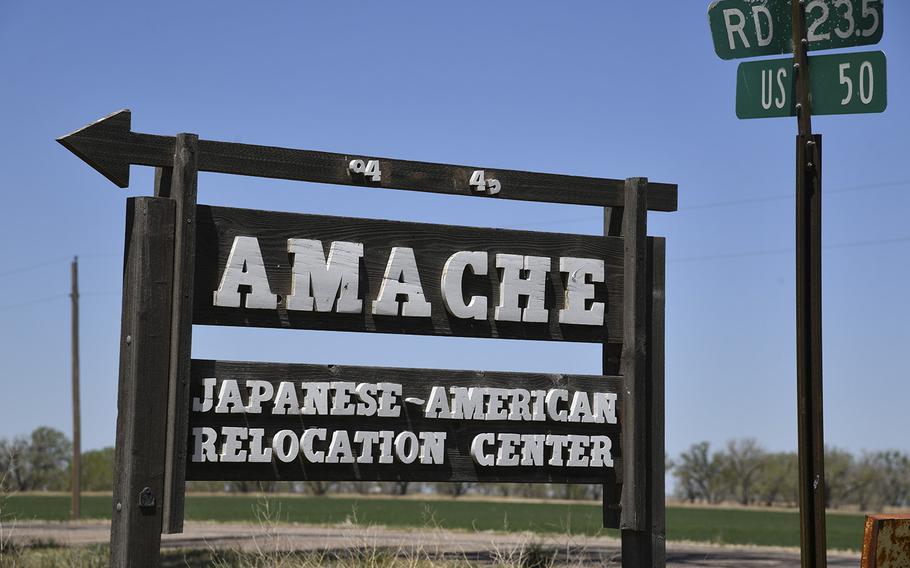
The entrance to the Amache Japanese-American Relocation Center is seen in Granada, Colorado on May 6, 2021. The camp site, which covered 10,000 acres, was used for residential, community and administrative buildings, and agricultural projects for the more than 7,300 Japanese- Americans that were relocated here during WWII. (Hyoung Chang/The Denver Post/TNS)
(Tribune News Service) — Ken Kitajima, one of Camp Amache’s last survivors and an advocate, died at 91.
As an adolescent, he spent around two years at the Amache camp near Granada — one of 10 U.S. sites created for the mass incarceration of Japanese Americans during World War II.
“We were citizens, most of us,” said Kitajima, who was confined there from 1943 until 1945. “We lost everything.”
In his adulthood, he joined the military, serving in the Air Force during the Korean War. Later, he helped lead the charge in turning the former Colorado internment camp into a federal historic site.
President Joe Biden signed the Amache National Historic Site Act into law in March. The space is meant to “provide places for people to learn about and reflect upon the historic events that occurred there,” according to the National Park Service.
“As a young boy at Amache, I never thought I’d see an America that cared about my story,” Kitajima said.
Former President Franklin D. Roosevelt signed the order that set the wheels in motion on Feb. 19, 1942. The Amache camp operated from 1942 to 1945, with more than 10,000 people passing through — including Kitajima, who recalled barbed wire fencing, guard towers, military men with machine guns and searchlights.
The government forced his family to leave California in a matter of two weeks “with only what you can carry.”
Kitajima and his sister were bullied by classmates after Japan bombed Pearl Harbor — an attack that provoked “mass hysteria,” he said. He remembered name-calling and having rocks thrown at him.
So, Kitajima said he was initially “kind of glad” to leave. “But it was a terrible experience,” he said.
He described the camp as a difficult place to endure, as its prisoners suffered dust storms, snow and more, according to the Vail Daily. Still, Kitajima joined a Boy Scout troop, and spent time hunting bugs and fishing.
“Ken was part of an extraordinary group of survivors and descendants who worked for years to tell the story of WWII Japanese-American internment camps,” Interior Department Secretary Deb Haaland tweeted on Tuesday.
She highlighted the advocacy of survivors, such as Kitajima, in establishing the historic site. “We will honor his legacy in the work we do to acknowledge this painful chapter in our nation’s history.”
Sen. Michael Bennet also acknowledged Kitajima’s passing in a Wednesday tweet.
“His tireless advocacy was critical to preserving the site and the memory of what happened there for future generations,” Bennet wrote. “Colorado will miss his leadership.”
The National Parks Conservation Association tweeted its condolences, adding, “NPCA is proud to have been a part of preserving his story.”
©2022 MediaNews Group, Inc.
Visit at denverpost.com.
Distributed by Tribune Content Agency, LLC.